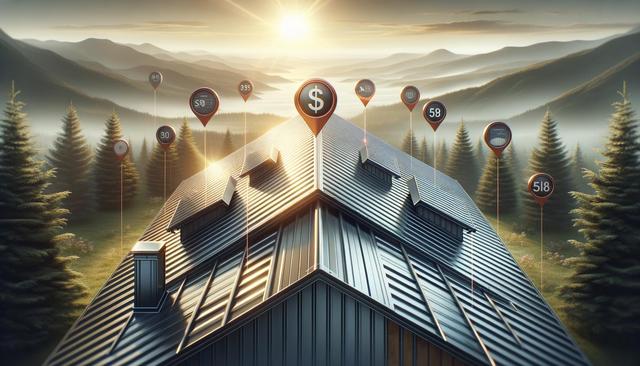Factors That Influence Steel Roofing Prices
Steel roofing prices can vary significantly based on several key factors. While the base cost of materials is an important component, other elements such as labor, installation complexity, and geographic location also impact the final price. It’s important for property owners to understand these variables when planning a roofing project.
Among the most influential factors are:
- Material Thickness (Gauge): Thicker steel typically costs more but offers greater durability.
- Protective Coatings: Galvanized or coated steel may have higher upfront costs but increased resistance to corrosion.
- Roof Design: Complex roof shapes with multiple slopes or unusual angles require more labor and custom fittings.
- Underlayment and Accessories: Additional components such as insulation, underlayment, and fasteners add to the overall cost.
Understanding these elements can help homeowners make informed decisions and better estimate their investment when exploring steel roofing options.
Material Choices and Their Impact on Cost
There are different types of steel roofing materials available, each with unique characteristics and price points. Galvanized steel and Galvalume are two common options. Galvanized steel is coated with zinc to reduce rusting, while Galvalume is coated with a mix of aluminum and zinc, offering extended corrosion resistance.
In addition to the coating, the finish of the steel can affect the cost. Painted steel panels, especially those with high-performance finishes, can carry a premium price. These finishes provide added protection against fading, chalking, and weathering, and are especially useful in regions exposed to harsh climates.
Steel roofing is also available in various panel profiles, including corrugated, ribbed, and standing seam. Each profile offers different aesthetic and functional benefits, and installation complexity can vary:
- Corrugated panels: Often more affordable and easier to install.
- Standing seam panels: Typically more expensive due to hidden fasteners and custom fabrication.
- Ribbed panels: Fall somewhere in between, offering a balance of cost and appearance.
Choosing the right material and style depends not only on budget but also on the building’s architectural requirements and long-term maintenance expectations.
Labor and Installation Costs
Labor is a significant component of steel roofing prices. The cost of installation can sometimes exceed the material cost, especially for complex projects. Roofing contractors typically charge based on the square footage of the roof, difficulty of the job, and local labor rates.
Installation costs can rise due to:
- Steep or high roofs: These require additional safety measures and equipment.
- Removal of existing roofing: Tearing off old materials adds time and disposal fees.
- Custom flashing and trim work: Necessary for weatherproofing and aesthetics, particularly on detailed rooflines.
Professional installation is crucial for maximizing the lifespan and performance of a steel roof. Improper installation can lead to leaks, rusting, or structural issues, which may incur additional repair costs down the road.
Homeowners are advised to get multiple quotes from licensed contractors and ensure that labor warranties are included in the contract. This can help manage long-term costs and provide peace of mind.
Regional Price Variations
Steel roofing prices are also influenced by location. In areas where steel roofing is more commonly used, competition among suppliers and contractors may help keep prices more competitive. In contrast, in regions where this type of roofing is less prevalent, costs can be higher due to limited availability or specialized labor.
Additional geographic considerations include:
- Climate: Areas prone to hurricanes, snow, or hail may require thicker panels or extra reinforcement, increasing overall costs.
- Building codes: Local regulations can affect material choices or installation methods, impacting cost.
- Transportation fees: Remote or rural locations might incur higher delivery charges for steel panels and accessories.
Understanding local market conditions is key when budgeting for a steel roof. Consulting with area contractors and suppliers can provide insight into what is typical in your region and help in setting realistic expectations.
Long-Term Value and Maintenance Considerations
While the initial investment in a steel roof can be higher than some other materials, the long-term value often makes it a financially sound choice. Steel roofs are known for their longevity, with many systems lasting 40 to 70 years when properly maintained.
Maintenance requirements are generally minimal and may include:
- Periodic inspections for rust or corrosion
- Cleaning debris from roof valleys and gutters
- Touching up any scratched or damaged areas
- Ensuring fasteners and seals remain secure
In addition, many steel roofing systems are energy-efficient, reflecting sunlight and reducing cooling costs during warmer months. Some are also compatible with solar panel installations, adding further long-term value. These benefits, combined with durability and low maintenance, contribute to the overall cost-effectiveness of steel roofing over time.


